Georgia-Russia conflict
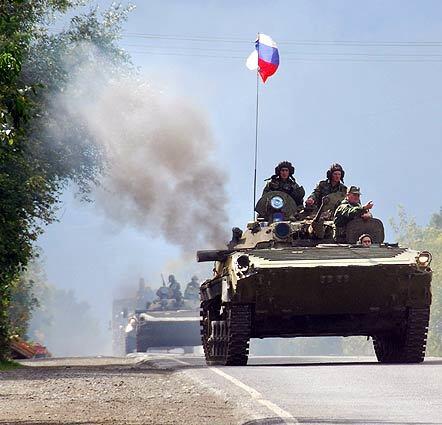
Russian peacekeeping soldiers drive military vehicles out of the Kventakosa checkpoint. Russia and the EU took a key step toward resuming partnership talks after President Dmitry Medvedev pledged his troops would complete their pullout from buffer zones in Georgia. (Vano Shlamov / AFP / Getty Images)
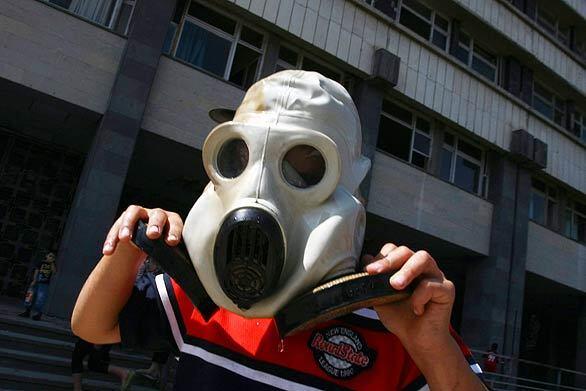
A boy plays with a gas mask outside a Soviet-era Defense Ministry building in Tbilisi, Georgia. Russia and Georgia virtually closed down diplomatic exchanges as the United States prepared a $1-billion postwar aid package for Georgia. In an additional show of U.S. support, Vice President Dick Cheney began a tour of four ex-Soviet states, including Georgia. (Mustafa Ozer AFP / Getty Images)
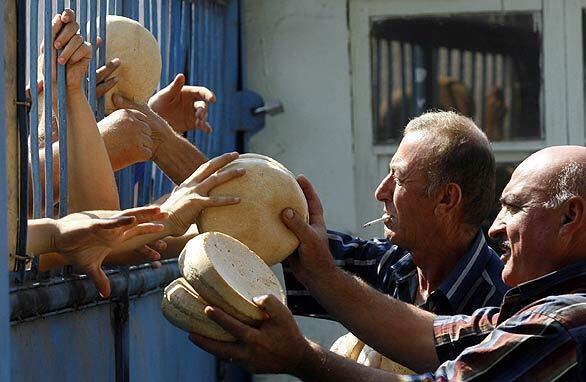
Bakers distribute free bread to residents in Tskhinvali, the regional capital of Georgia’s breakaway province of South Ossetia. A brief war broke out between Russia and Georgia after Georgia’s assault on South Ossetia’s capital on Aug. 7. (Sergey Ponomarev / Associated Press)
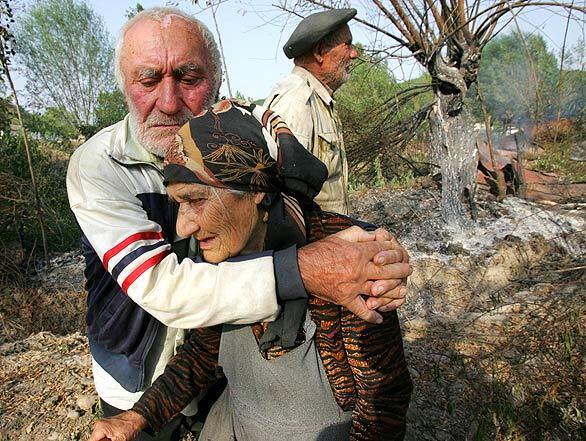
Elderly ethnic Georgians stand near their burned home in the village of Avnevi in South Ossetia. Satellite images obtained by the
Advertisement
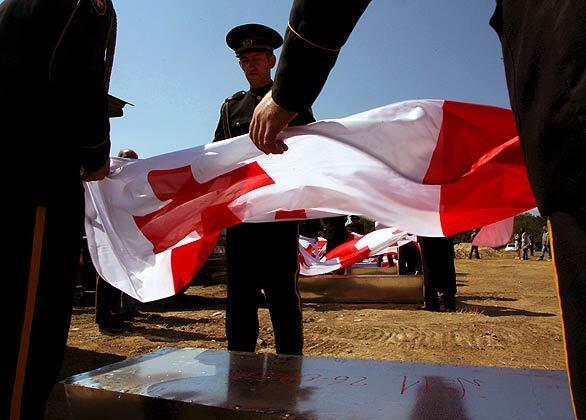
Georgian servicemen cover coffins of unidentified Georgian soldiers killed in the South Ossetia conflict zone with Georgian state flags during a funeral in Tbilisi, Georgia. Georgian Foreign Minister Eka Tkeshelashvili delivered a speech at the Permanent Council of the Organization for Security and Cooperation in Europe in Vienna. (Zurab Kurtsikidze / EPA)
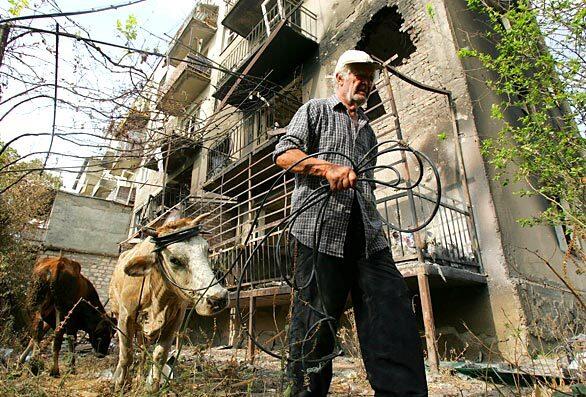
An man walks his cows past destroyed buildings in the South Ossetian capital of Tskhinvali. (Viktor Drachev AFP / Getty Images)
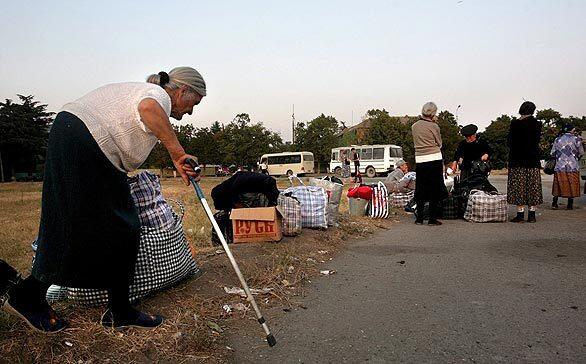
South Ossetians stand in the street, waiting for transport as they return to Tskhinvali, the capital of South Ossetia,
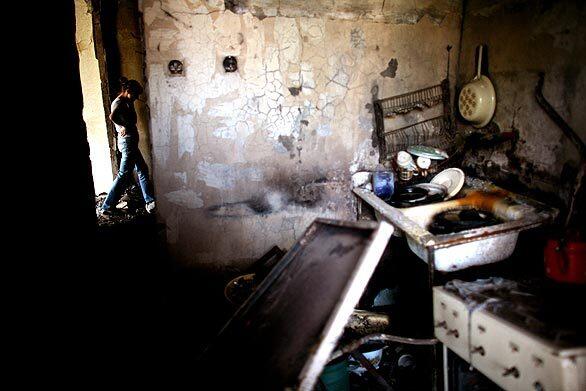
A Georgian woman returns to Gori and her home, hit by bombs during the Russian onslaught. (Uriel Sinai / Getty Images)
Advertisement
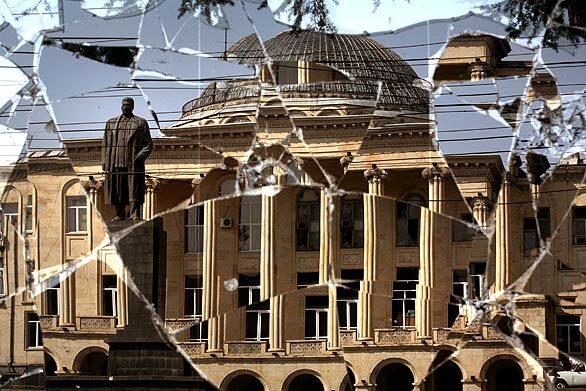
A statue of native son Josef Stalin is reflected in broken glass in the square in downtown Gori, Georgia. Russia’s Gen. Anatoly Nogovitsyn has said that combat troops have left Georgia and only peacekeepers remain. Residents are returning to their homes in Gori after Georgian forces were handed back control of the main east-west highway. (Uriel Sinai / Getty Images)
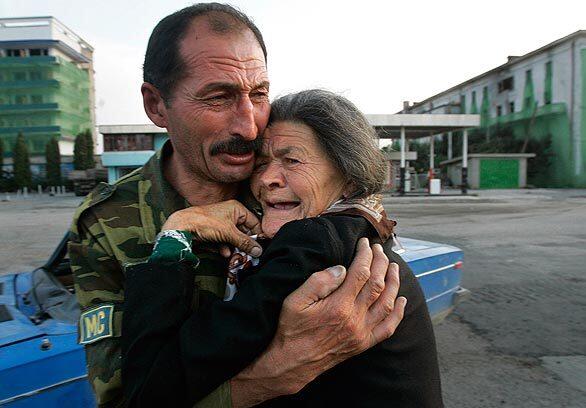
Russian peacekeeper Robinzon Guzitayev embraces his neighbour Nasyrat Byibyilayeva who returned to Tskhinvali, the main city of
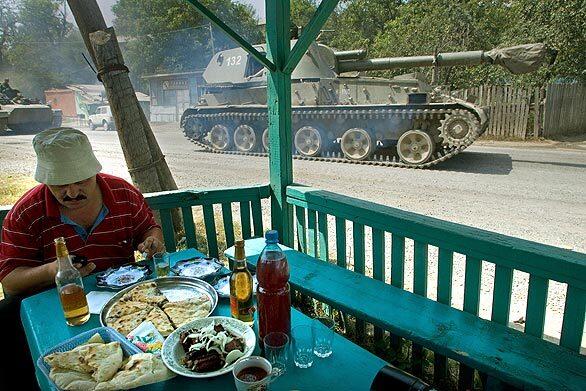
A South Ossetian eats at a restaurant as Russian armored vehicles move in the direction of North Ossetia, on the outskirts of Dzhava, in
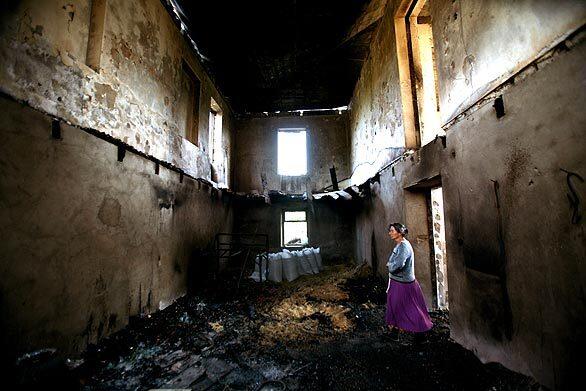
A Georgian woman walks through a bombed-out home in the village of Ruisi,
Advertisement
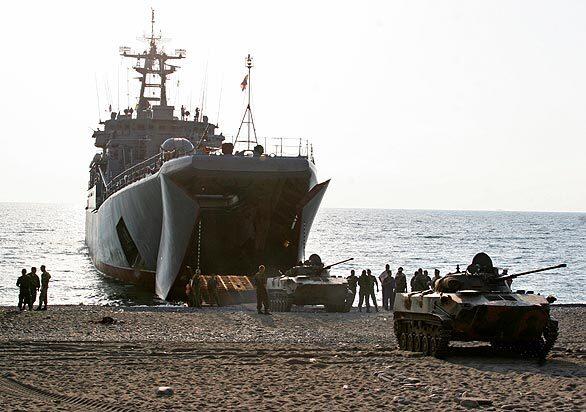
Russian military vehicles prepare to board a military ship near Sukhumi, capital of Georgia’s breakaway province of Abkhazia. Russia has begun withdrawing its forces from Georgia, but Russian troops started to dig new positions around the Black Sea port of Poti, 20 miles south of Abkhazia and outside the security zone, where Russian peacekeeping forces are allowed to stay on Georgian soil. (Vladimit Popov / Associated Press)
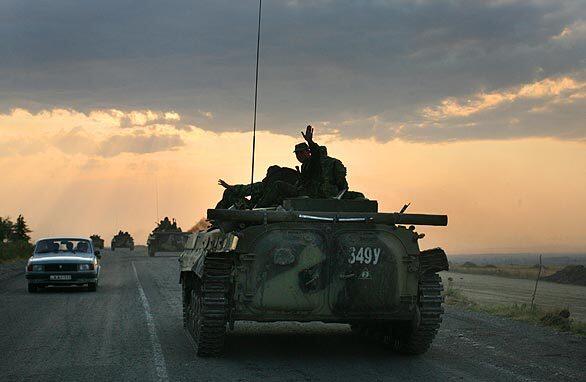
A column of armored personnel carriers make their way down the main east-west highway in
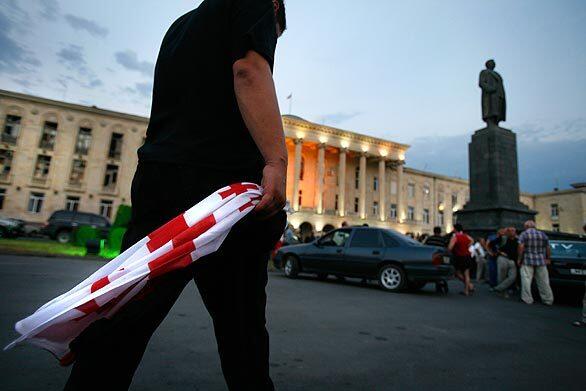
A resident of Gori takes a Georgian flag to Stalin Square in the heart of the central Georgian city, which was cut off from the rest of the country by Russian forces for the last two weeks. (Michael Robinson Chavez / Los Angeles Times)
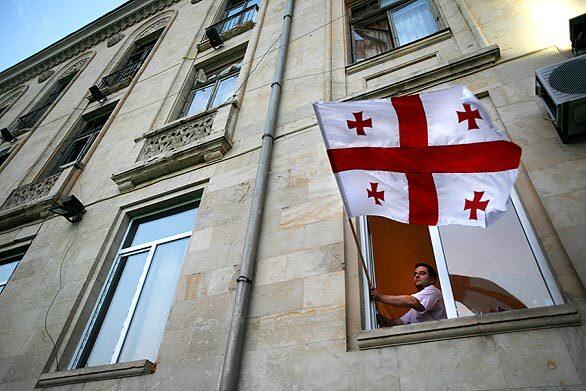
An administrator waves the Georgian flag from a window in Gori’s City Hall after Russian troops left the city. Though Russian troops have left, the city is being picked over by Georgian security forces for mines, booby traps and cluster bombs. (Michael Robinson Chavez / Los Angeles Times)
Advertisement
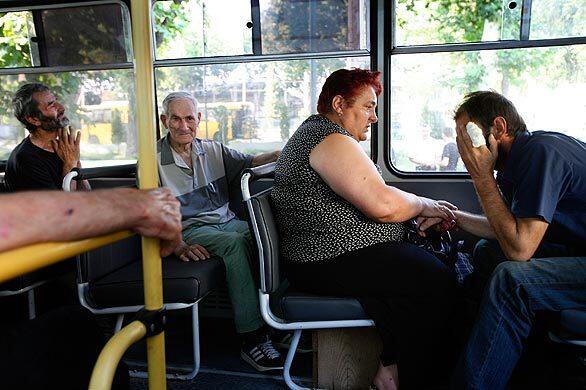
Four Ossetians who were part of a prisoner exchange at a hospital in Gori, Georgia, sit on a bus. In the swap, five Ossetians were exchanged with five Georgian military officers. (Michael Robinson Chavez / Los Angeles Times)
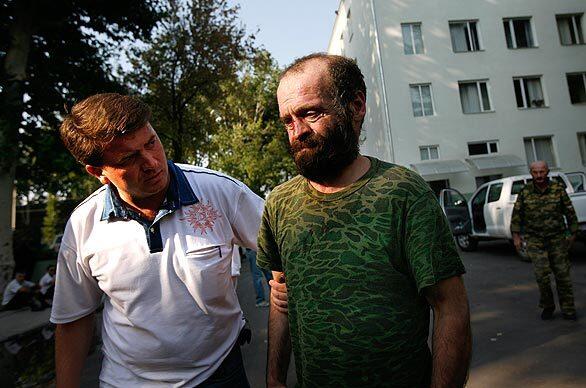
An Ossetian was held by Georgian militia and was part of a prisoner exchange at a hospital in Gori. (Michael Robinson Chavez / Los Angeles Times)
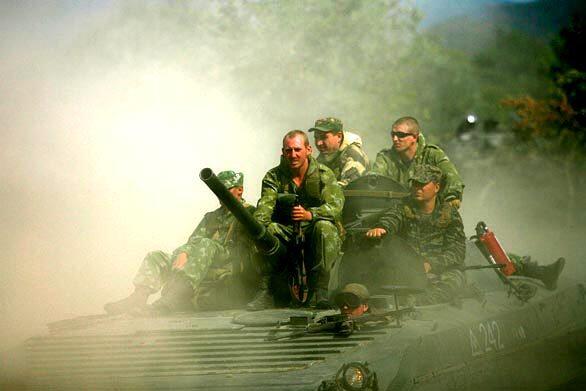
Russian soldiers ride on the road from Tbilisi to Gori, Georgia. According to reports, Russia has begun to withdraw its missiles, tanks and troops from central Georgia after criticism from Western leaders. (Uriel Sinai / Getty Images)
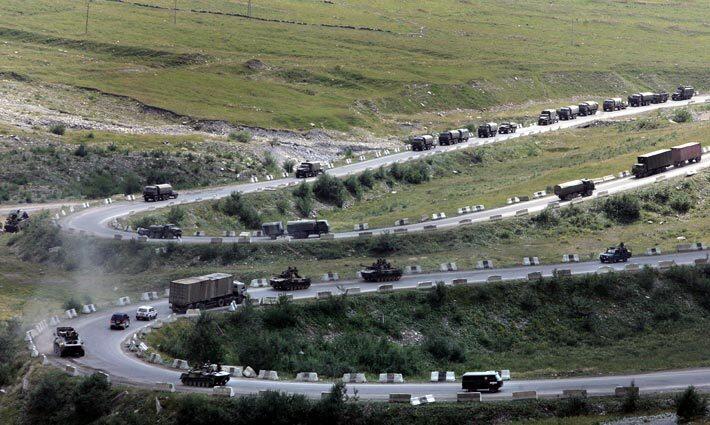
A column of Russian troops in tanks and trucks drives toward the Russian border near the town Ruk in the South Ossetia breakaway region. Russian forces began to pull out from parts of
Advertisement
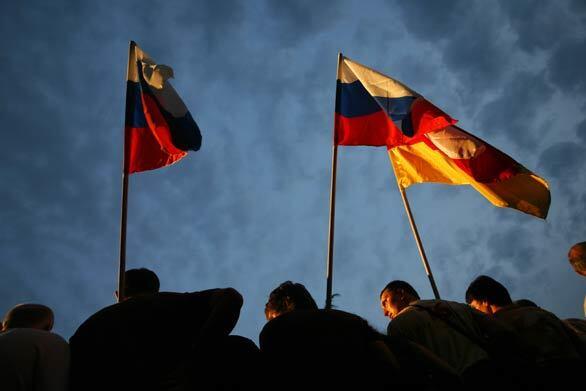
Two Russian flags and a South Ossetian one fly at a patriotic concert in Tskhinvali, the capital of South Ossetia. A Russian orchestra, led by renowned Ossetian Russian conductor Valery Gergiyev, performed. We are here today to express our admiration for you, to tell the whole world that we want it to know the truth about the horrible events in Tskhinvali, Gergiyev said. (Michael Robinson Chavez / Los Angeles Times)
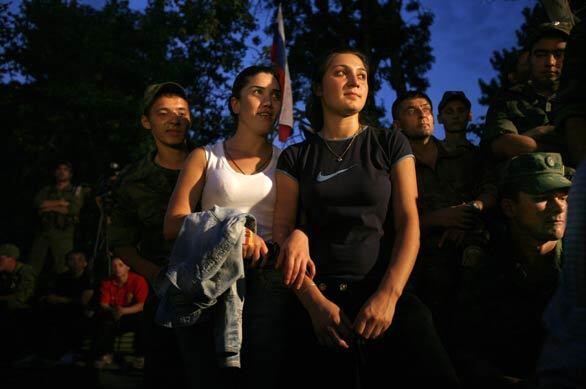
Residents of Tskhinvali and Russian soldiers attend the concert. (Michael Robinson Chavez / Los Angeles Times)
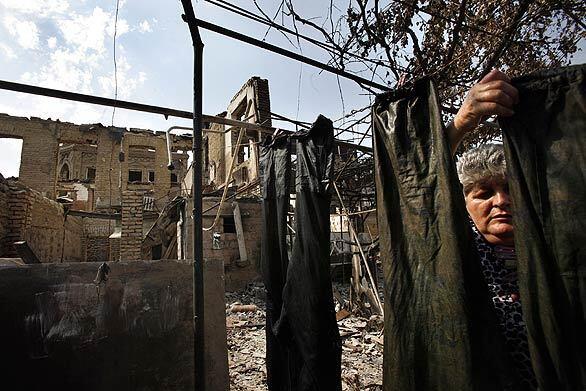
A woman in the Jewish Quarter of Tskhinvali hangs her laundry. Some of the buildings were damaged in fighting between South Ossetia and Georgia in 1993. (Michael Robinson Chavez / Los Angeles Times)
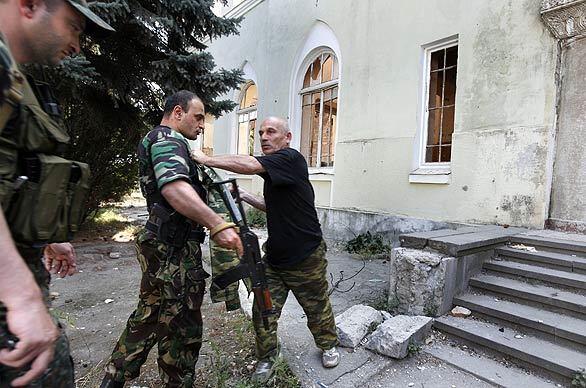
A South Ossetian soldier jostles with a man at a rally in Tskhinvali. (Michael Robinson Chavez / Los Angeles Times)
Advertisement
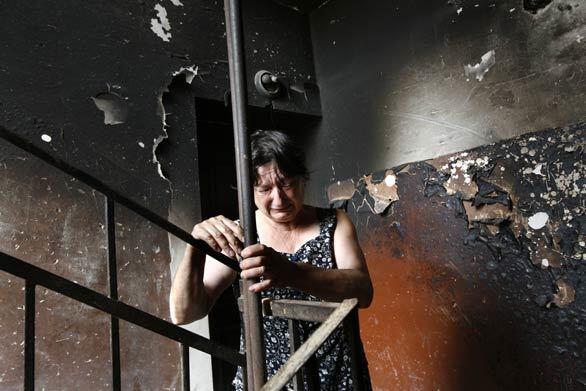
A woman weeps in a burned-out building in the village of Karaleti just north of Gori, Georgia. Many buildings in the village were damaged in recent fighting. (Michael Robinson Chavez / Los Angeles Times)
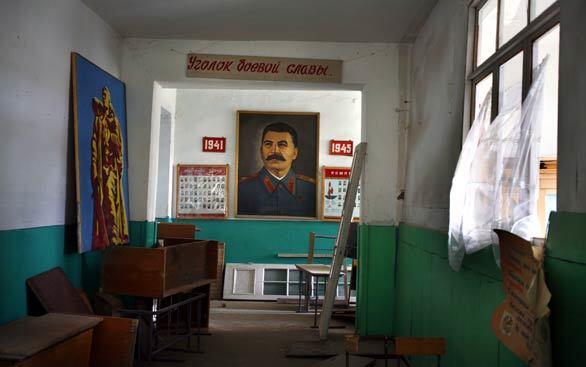
A portrait of Stalin hangs in a damaged school in the village of Khetagurouo outside Tskhinvali, South Ossetia. There were conflicting reports about responsibility, with some saying Georgians attacked the town. Evidence at the scene, including discarded Georgian rations, suggested that it was a defensive position for the Georgian army, which was overrun by Russian forces and air attacks. (Michael Robinson Chavez / Los Angeles Times)
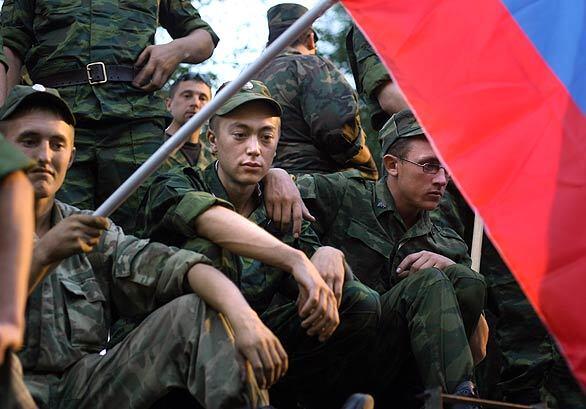
Russian soldiers attend a concert in Tskhinvali. Russian officials have made clear that they do not plan on leaving South Ossetia and some parts of
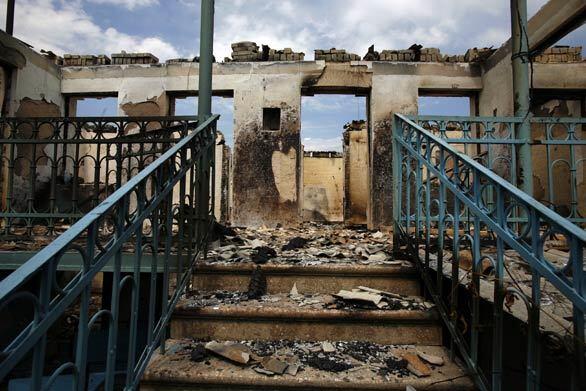
A building in the Georgian village of Karaleti just north of Gori. (Michael Robinson Chavez / Los Angeles Times)
Advertisement
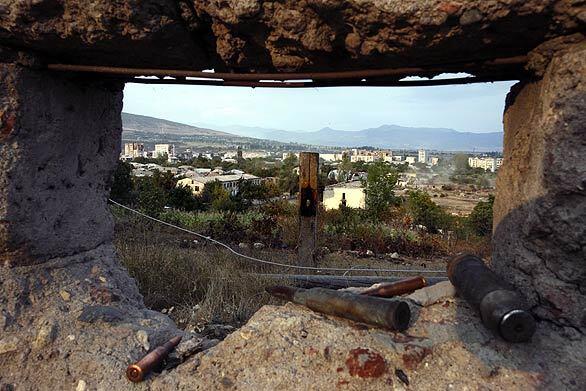
Tskhinvali is seen through a damaged wall. The overlook is part of a Russian peacekeeping base that was attacked by Georgian troops. (Michael Robinson Chavez / Los Angeles Times)
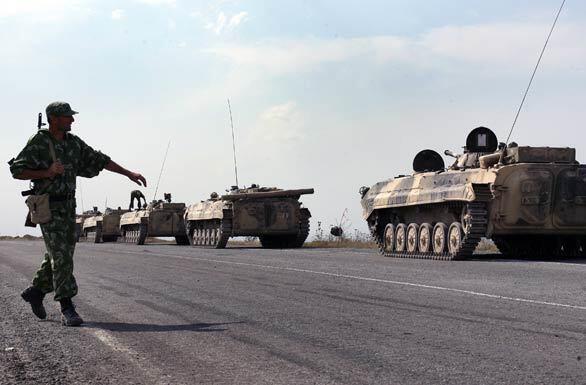
Russian tanks and armored personnel carriers sit parked on the highway outside of Gori, where Russian troops maintained positions around the central Georgian city. (Michael Robinson Chavez / Los Angeles Times)
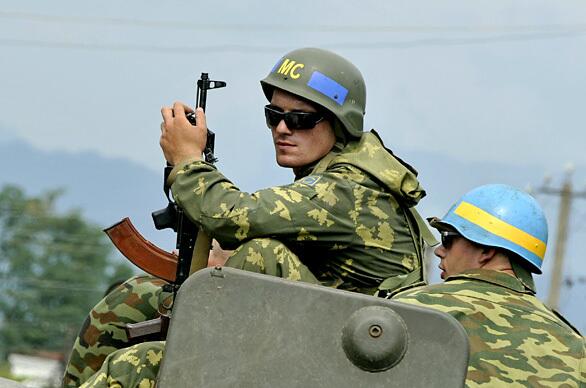
Russian soldiers travel atop of an armored personnel carrier as their convoy drove into western
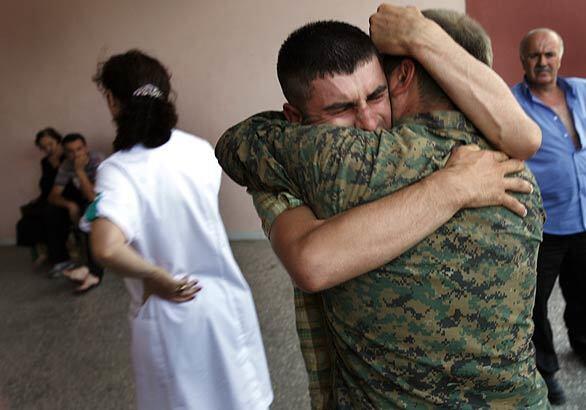
One of 13 Georgian prisoners and two civilians that were exchanged for five Russian prisoners is embraced after arriving at the Gudushauri Hospital in Tbilisi, the Georgian capital. (Michael Robinson Chavez / Los Angeles Times)
Advertisement
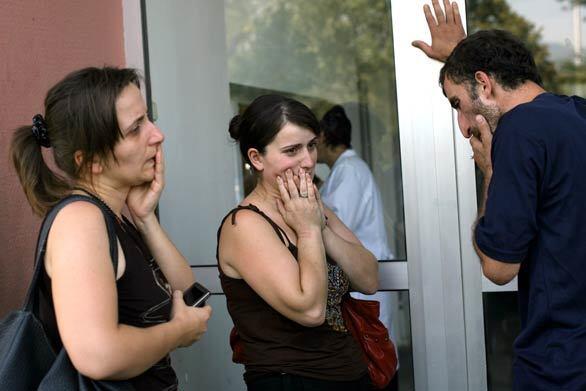
Relatives await their chance to visit with some of the Georgian prisoners who were exchanged on the Tbilisi-to-Gori highway on Tuesday morning. (Michael Robinson Chavez / Los Angeles Times)
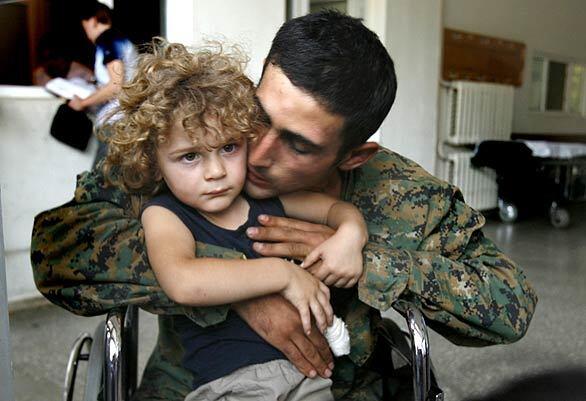
Giorgi Ramazahshvili embraces his nephew after arriving at the Gudushauri Hospital. Despite the exchange for prisoners in central
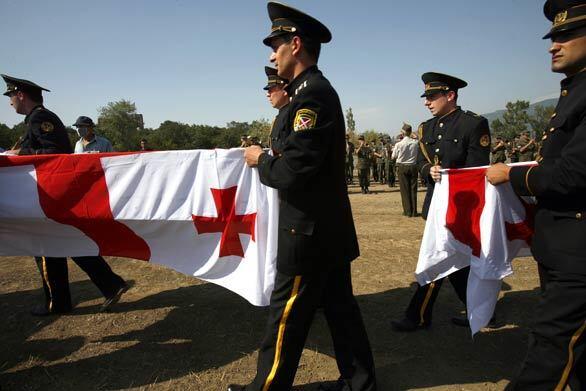
Georgian soldiers carry the caskets of seven soldiers who died fighting the Russians in South Ossetia and central Georgia. (Michael Robinson Chavez / Los Angeles Times)
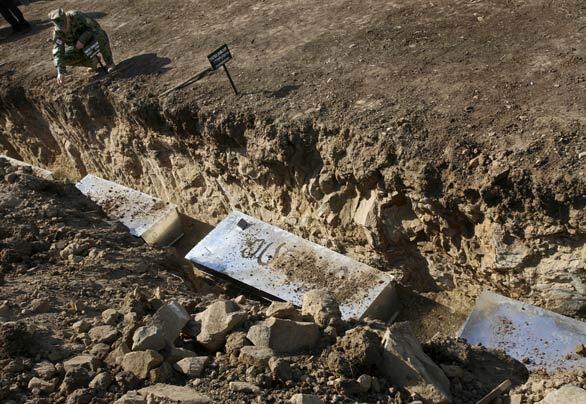
A Georgian soldier respectfully tosses a handful of dirt atop each of the seven coffins at a cemetery on the outskirts of Tbilisi. (Michael Robinson Chavez / Los Angeles Times)
Advertisement
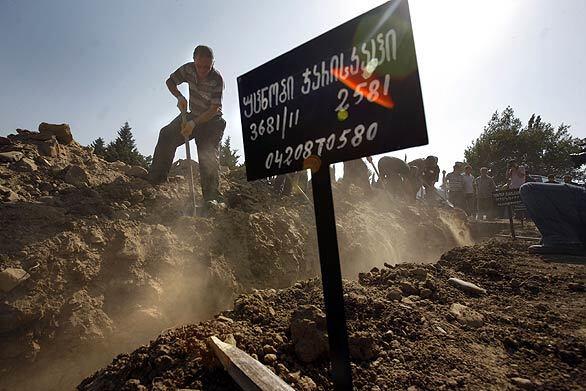
Gravediggers fill a common grave that holds seven coffins at a cemetery on the outskirts of Tbilisi, the scene of multiple funerals as Georgians began burying their dead from the war with Russia. (Michael Robinson Chavez / Los Angeles Times)
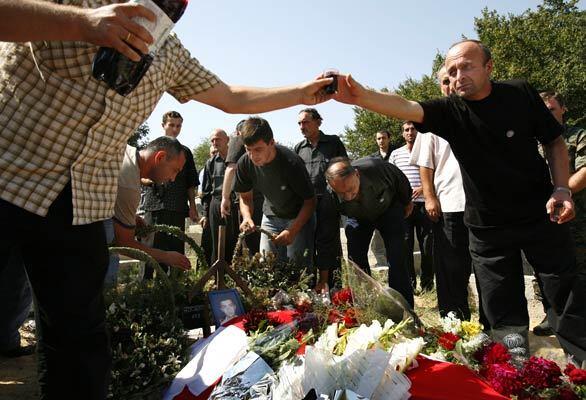
Relatives and friends of Sheklashivili Ilia, 25, who died fighting in Gori, drink and pour homemade wine in his honor atop his grave. (Michael Robinson Chavez / Los Angeles Times)
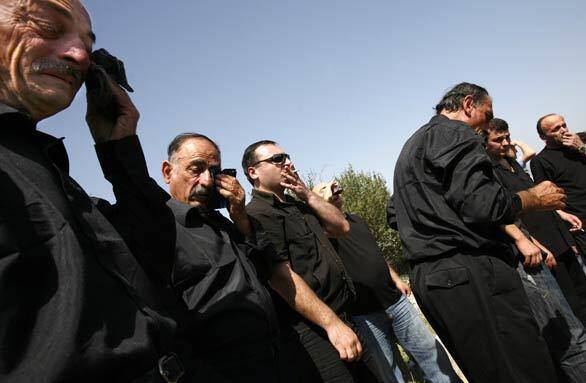
Relatives and friends of Ilia, including his father, left, weep during his funeral on Tuesday afternoon. (Michael Robinson Chavez / Los Angeles Times)
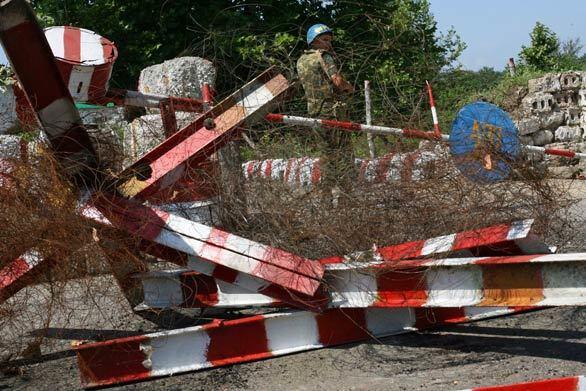
Russian soldiers guard a checkpoint at the southern border of the breakaway republic of Abkhazia in western
Advertisement
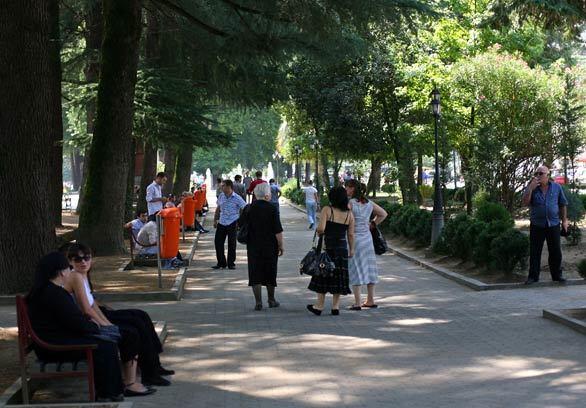
Life in western







